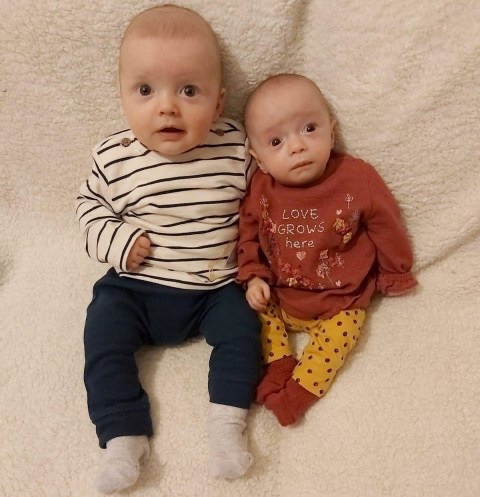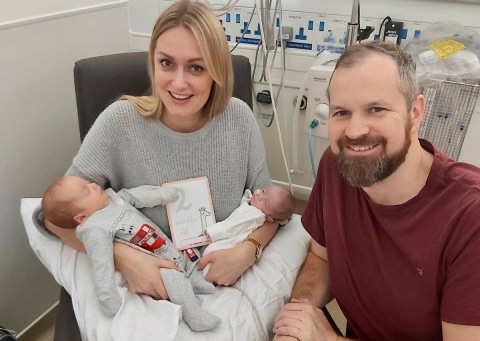A woman who became pregnant while already expecting has shared her remarkable story to highlight that it’s possible to conceive again while several months along, resulting in two separate pregnancies. This phenomenon is known as superfetation.
In 2020, 39-year-old Rebecca Roberts and her partner, 43-year-old Rhys Weaver, were examining the ultrasound of their baby boy, Noah, who was conceived 12 weeks earlier. To their surprise, they discovered that Noah had a sibling on the way—Rebecca was also pregnant with their daughter, Rosalie. The two babies were conceived approximately three weeks apart.
“We feel incredibly fortunate; having twins is a blessing, but to have such unique twins is truly wonderful,” Rebecca expressed.
Doctors informed Rebecca that her case was likely a result of superfetation, and she was astonished by the uniqueness of her pregnancy. “I didn’t even know this was possible. Even my midwife found it puzzling,” she said.
Despite the risks associated with carrying a second baby during pregnancy, Rebecca successfully gave birth to Noah, who weighed 4lb 10oz, and Rosalie, who weighed 2lb 7oz, on September 17, 2020, at the Royal United Hospital in Bath.

Due to her small size, Rosalie was transferred to the larger St Michael’s Hospital in Bristol, where she remained for 95 days to gain strength. Meanwhile, Noah was stable enough to stay in Bath but required three weeks of hospital treatment before he could return home to meet his 14-year-old sister, Summer.

Rebecca isn’t the only woman in recent times to make headlines for becoming pregnant while already expecting.
“Medically, this is considered an anomaly,” explains Dr. Misra-Sharp. “It’s important to differentiate between superfetation and more common conditions like twinning—both fraternal and identical—which are often confused with it.
“The key distinction is that superfetation occurs when eggs are released and fertilized at different times, sometimes weeks apart, while twins are formed from eggs fertilized simultaneously.”
The doctor notes that superfetation is typically detected through perinatal ultrasounds, which reveal that the two fetuses are at different developmental stages as the pregnancy advances.
“One fetus will often appear visibly smaller or younger than the other, usually by several weeks,” she adds. “In cases of twinning, even if there are size differences, the fetuses are generally of the same gestational age, and any size discrepancies would be attributed to growth issues.”